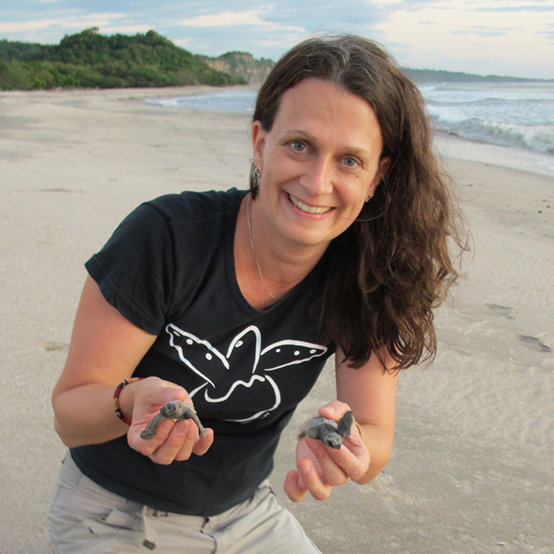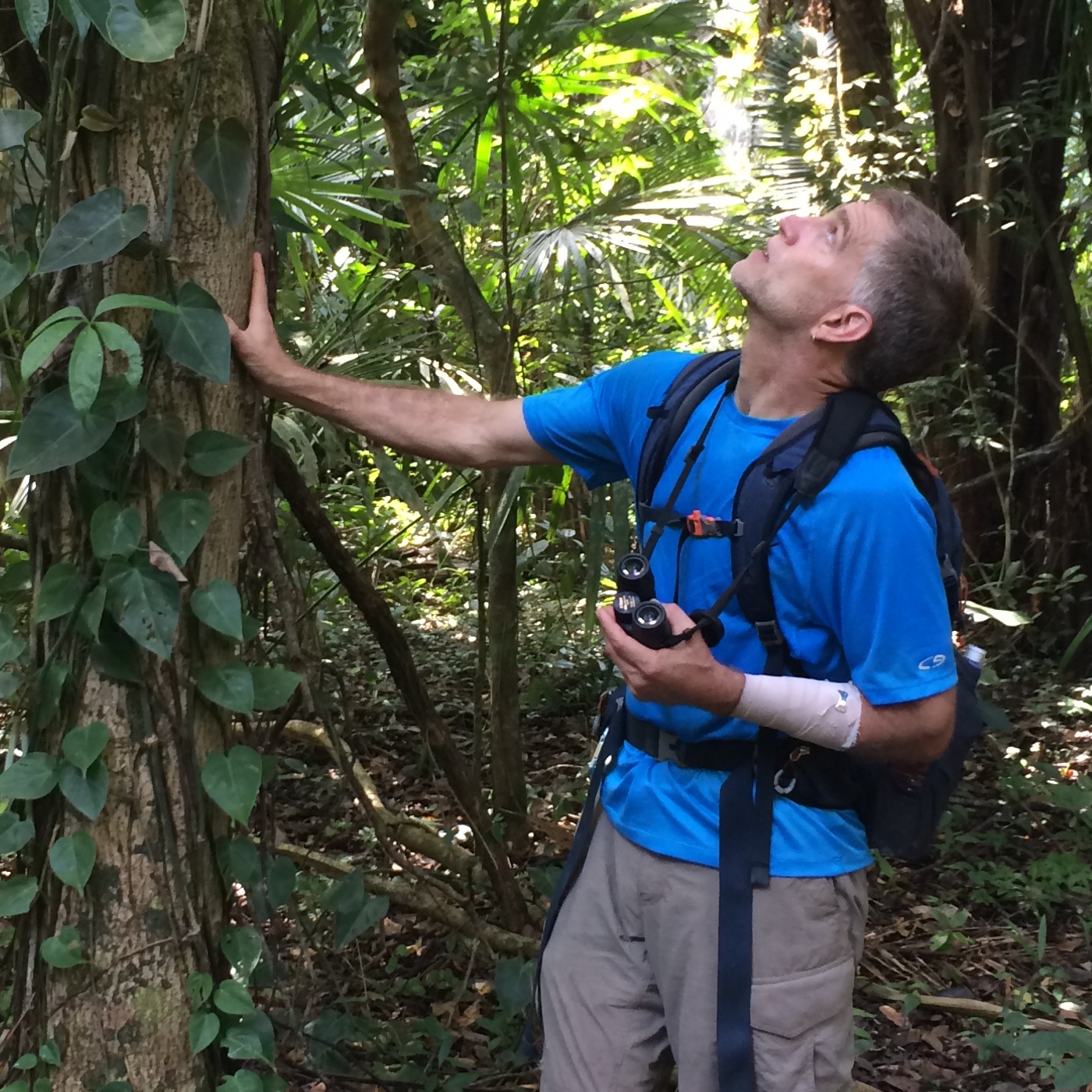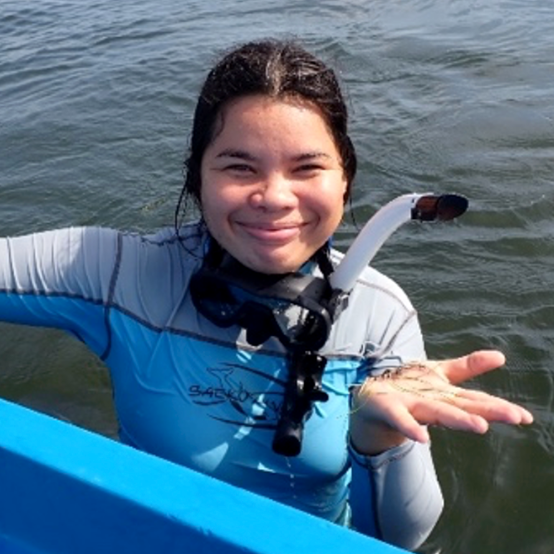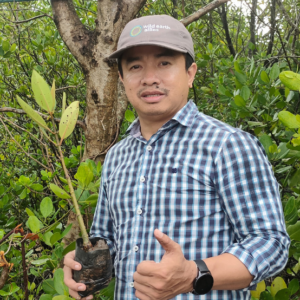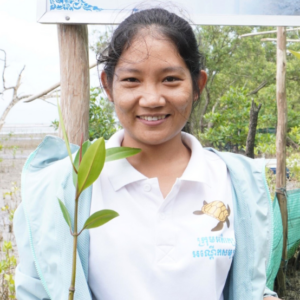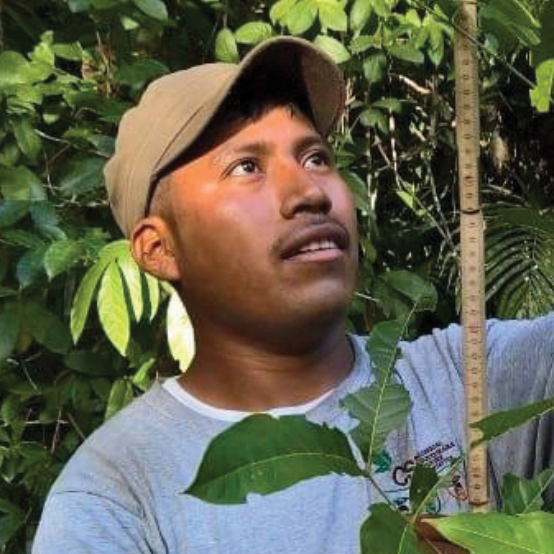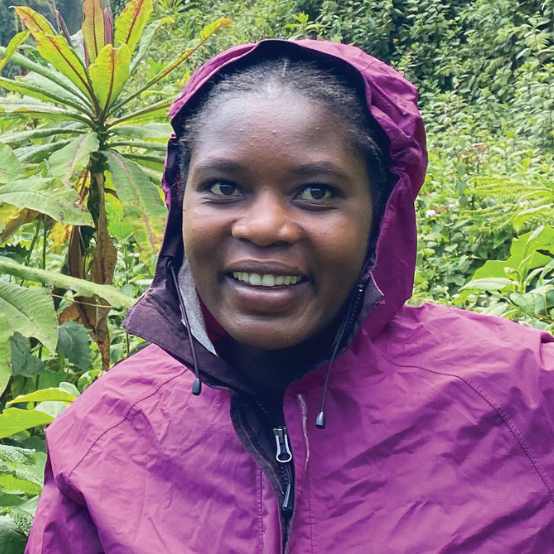Belize is growing and modernizing quickly, and threats to its trees and forests are intensifying. Botanical knowledge, however, makes management and protection efforts more effective. We are taking steps to protect Belize’s more than 1,100 tree species by developing a comprehensive field guide, in close collaboration with local botanists and the University of Belize Environmental Research Institute.
We invite you to come along on this adventure of discovery and learning. Watch for tree trivia that corresponds to our field guide work on Facebook and Twitter.
Trivia answers can be found in the species profiles featured in our blog (like those below). Good luck!
 Parmentiera aculeata
Parmentiera aculeata
Normally a small tree (less than 10 meters) associated with rocky stream sides, the specimen in the above photographs is champion-sized.
The flowers (and fruits) of this relative of the calabash tree are cauliflorus (literally “stem flower”), born directly on the trunk and major branches. Although the fruit is edible, the common name “cow okra” implies it is a less-than-savory dish.
The traditional folk-use of the fruits for treating kidney stones—one of many traditional uses nearly lost to modern society—has recently been supported by laboratory studies. The most frequently-used common name outside of Belize is “cuajilote,” a Nahuatl name for the resemblance to an ear of maize (corn).
The scientific name refers to its prickly stems (they are “aculeate” in botanical terms) and to Antoine-Augustin Parmentier. The Frenchman is best known for his promotion of the potato (previously considered pig food) for consumption by people in mid-18th Century France.
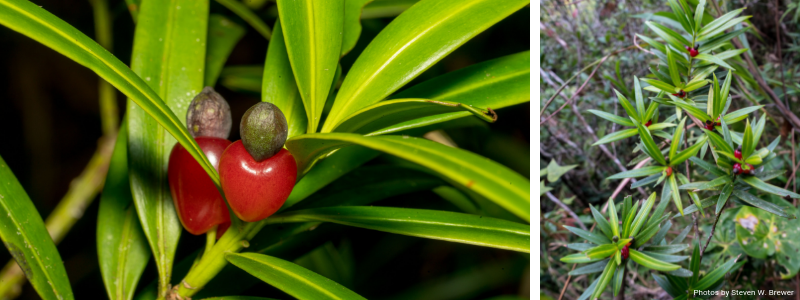 Podocarpus guatemalensis
Podocarpus guatemalensis
Like members of the related pine tree family (Pinaceae), this species is a gymnosperm (literally “naked seed”), meaning that it does not have flowers or fruits around the seeds. Flowers and fruits give angiosperms an advantage in seed dispersal and mate selection.
Very few gymnosperms evolved fruit-like structures for their seeds. The genus Podocarpus (“foot fruit”) has been around for over 60 million years. Its female cone scales have evolved into fleshy receptacles, which changes colors from green to yellow to salmon pink to bright red to attract seed dispersers. The seed itself is enclosed by a thin-fleshy scale.
Finding ripe “fruits” on this species is extremely rare in Belize, because they are highly attractive to birds. Males are separate trees and produce pollen-bearing cones much like those of pines.
The wood of this species has been used in construction, wood-working, and boat-making. Traditional medicinal uses of this and other species of Podocarpus include treatment of fevers, asthma, coughs, other respiratory illnesses, cholera, distemper, and other diseases. Taxol and other anti-cancer compounds have been isolated from several Podocarpus species.
Common names of this species include Belizean yellow wood or mountain cypress. This species is listed by the IUCN as Vulnerable in some countries because of overharvest and habitat loss.
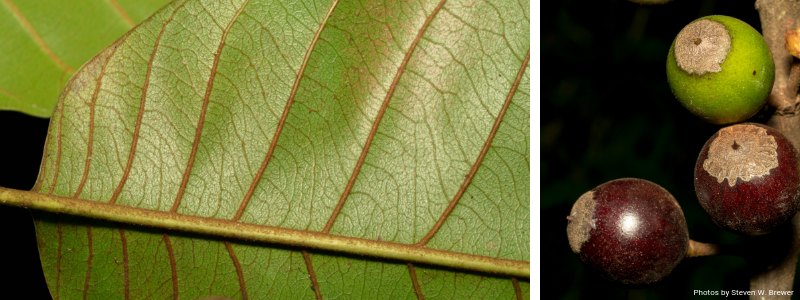 Sideroxylon stevensonii
Sideroxylon stevensonii
This rare species is categorized as Vulnerable by the IUCN’s Red List of Threatened species. It is found in limestone forests of western Belize, El Peten (Guatemala), and certain parts of eastern Chiapas, Mexico.
It is named after Duncan Stevenson, Belize’s Deputy Conservator of Forests in the late 1920’s. Stevenson also derived the first major classification of Belize’s vegetation and collected the type specimen of this species from Belize.
The common name Zapote faisán literally means pheasant sapote (the latter derived from the Nahuatl tzapotl for soft edible fruit). This may refer to the pheasant-like, ocellated turkey as a consumer of this fruit (true pheasants are native to Asia).
The other common name, chicle faisán, refers to the use of this tree as a source of the milky latex, chicle, historically harvested from the sapodilla tree (Manilkara zapota) to make chewing gum.
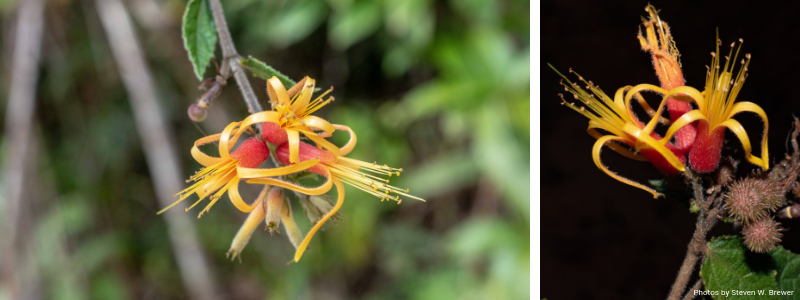 Triumfetta speciosa
Triumfetta speciosa
Triumfetta speciosa is mostly a high-elevation species along the spine of Central America. The few records of this species from Belize appear to represent a significant disjunction from the Central American population, and the only known occurrence of this species for the Yucatan Peninsula.
In Belize, this tree or shrub is (so far as is known) restricted to oak-pine forests, woodlands, and edge vegetation in a small portion of the western Mountain Pine Ridge Forest Reserve.
The prickly fruits have tiny hooks that promote dispersal by acting like “velcro,” attaching themselves to passing animals.
The genus name honors Giovan Battista Trionfetti, a 17th century Italian botanist, and the epithet means “showy” (for the spectacular flowers).
Trionfetti developed the botanical garden of the Roman “Sapienza” into a famous institution. He is also known for his scientific debate with Marcello Malpighi, for which the plant family Malpighiaceae is named. Malpighi espoused the idea of preformation of organisms (in eggs or seeds), versus Trionfetti’s support of the idea of spontaneous generation of organisms.
In 2018, Wild Earth Allies kicked off the Trees of Belize Project, a multi-year effort dedicated to growing and cultivating in-country expertise and interest in botany. Dr. Steven W. Brewer is leading the Trees of Belize project in collaboration with the Environmental Research Institute at the University of Belize.
Consider supporting this effort. Donate today.

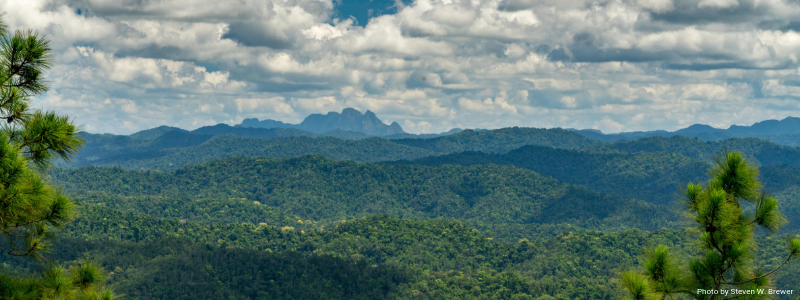
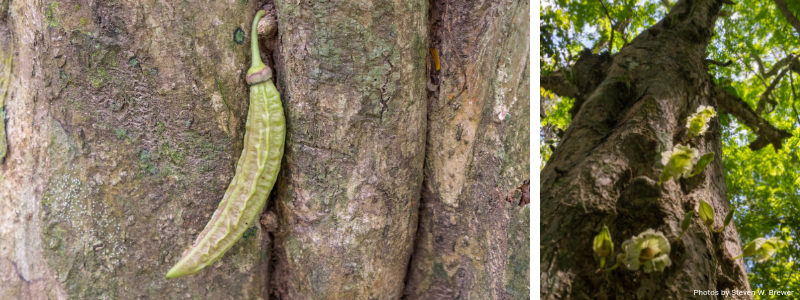 Parmentiera aculeata
Parmentiera aculeata
